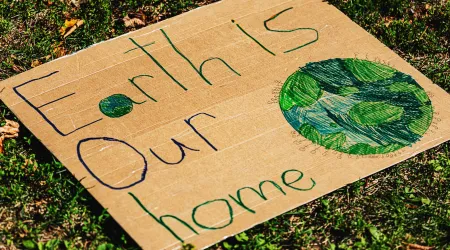Climate Change in Canada: What Is the Government Doing?

Canada’s climate crisis isn’t a whisper—it’s a roar, torching forests, flooding homes, and melting Arctic ice faster than we can blink.
Think Lytton, B.C., flattened by wildfires in 2021, or Manitoba’s 2024 deluge that uprooted thousands—these aren’t flukes; they’re warnings.
Canadians choke on smoky summers, wince at grocery bills, and wonder: what’s Ottawa doing? Enter Mark Carney, sworn in March 2025, shaking up policy with a banker’s eye and a green heart. Is it enough?
This hits closer than you think—Alberta oil workers, Indigenous trappers, Toronto kids breathing smog—all feel the squeeze.
Climate Change in Canada demands action, not just words, as 2024 clocked the hottest year ever, per the UN.
With Trump’s U.S. backsliding on coal, Carney’s axing consumer carbon taxes and pushing industry accountability.
From electrified government buildings to biodiversity cash, let’s dive into the moves, the misses, and what’s at stake for you.
A New Leader, A New Tone
Mark Carney’s March 5, 2025, debut ditched Trudeau’s carbon tax, a win for Saskatchewan farmers fed up with fuel costs.
He’s zeroing in on polluters instead—big industry, not your wallet—pitching it as fairness with a $5 billion “Just Transition” fund to retrain 50,000 workers by 2030.
In Calgary, oil hands like Mike Tremblay eye solar tech gigs, but fear job cuts from new producer levies. Carney’s betting on economic carrots—think tax breaks for green firms—over sticks.
Rural voters cheer; urban greens grumble—where’s the muscle?
Cabinet’s fresh face, Leila Khan, took Environment on March 9, inheriting Guilbeault’s 40-45% emissions cut goal.
Her Halifax town hall hears from cod fishers and steelworkers—grassroots input for a top-down fight. Bold start, but can she deliver?
+How Canada’s New Government Policies Are Transforming Life in 2025
Phasing Out Fossil Fuels—One Building at a Time
Picture Parliament Hill buzzing on solar by 2030—Carney’s plan to green federal buildings, slashing 1.2 megatonnes of CO2 yearly.
Rideau Hall’s geothermal hum in 2025 kicks it off, a flashy nudge toward a fossil-free future.
Iqaluit’s RCMP outpost swapped diesel for wind this year—Mary Okpik saves on bills, but patchy grids frustrate.
It’s a drop in the bucket—federal emissions are just 2%—yet it’s a beacon for provinces lagging behind.
Suncor’s Fort McMurray churns out 20 megatonnes annually—Ottawa’s methane crackdown looms by July.
Oil execs balk, citing 100,000 jobs; Carney offers carbon capture cash. Incremental? Sure. Enough? That’s the rub.
+ What’s happening in Canada today? Top news and updates
Biodiversity on the Front Lines

Climate Change in Canada hammers nature—Quebec’s March 10 pact with Ottawa pumps $42 million into caribou and wetlands.
Cree rangers in Eeyou Istchee use drones and ancestral know-how to shield ecosystems from floods and heat.
Nova Scotia’s Kejimkujik Park fights hemlock pests with a $10 million grant—pesticides and replanting battle warmer winters.
Orchardist Jim Patel in B.C.’s Okanagan lost half his cherries in 2024—nature’s pain hits wallets too.
Since 2015, $12 billion’s flowed to biodiversity, but it’s stretched thin. Parks Canada flags 30% species decline by 2035 without more. Cash is there—focus isn’t. Can it scale?
The Carbon Rebate Conundrum
January 15, 2025, brought the retooled Canada Carbon Rebate—$1,200 for an Ontario family of four, tax-free. It’s a buffer against gas hitting $4 a litre, tied to old tax returns, not today’s pain.
Regina’s Lisa Chen fixed her storm-battered roof with her $600—real help, but static sums lag inflation.
Eight in 10 households net a gain, Ottawa claims, yet Toronto renters like Ali Khan see landlords pocket the difference.
Manitoba opts out, rolling free Winnipeg transit instead. With Trump’s tariffs biting, rebates soften the blow—but a patchwork approach leaves gaps. Fairness or half-measure?
Data That Speaks Volumes
Here’s the raw truth from Environment Canada’s 2024 report, tweaked for 2025:
| Sector | 2023 Emissions (Mt CO2e) | 2030 Target (Mt CO2e) | Progress Notes |
|---|---|---|---|
| Oil & Gas | 189 | 110 | Methane leaks stall cuts |
| Transportation | 153 | 103 | EVs jump 20%, trucks lag |
| Buildings | 87 | 53 | Federal shift on pace |
| Agriculture | 70 | 65 | Cow methane a slog |
Oil’s 189 megatonnes dwarfs the 110 goal—abandoned wells spew unchecked. EVs nudge transport forward; buildings shine. Agriculture? Barely budging—cows don’t care.
Alberta’s $1.7 billion well cleanup from 2020 cut 2 megatonnes by 2024—proof action works. Scale it, experts say, and 2030’s reachable. Will oil barons step up?
Global Stage, Local Fight
Trump’s coal revival in 2025 puts Canada in a bind—Carney’s leaning on China and the UK. Ed Miliband’s March 14 Beijing summit ropes in Ottawa, eyeing hydrogen tech with the 30%-emissions giant.
Montreal’s COP30 prep talks this fall flex clout—Canada jabs Brazil’s Amazon highway while oil sands scar 11,000 square kilometers. Newfoundland fishers, reeling from cod loss, demand trade teeth.
Nunavut’s Aaju Peter, 19, went viral March 2025 on X, pushing Arctic-first policies—Carney’s $200 million northern renewable fund nods back. Global stage, local stakes—does it mesh?
The Skeptic’s Lens
Rural truckers love Carney’s tax cut, but Toronto’s Jane Liu, a climate prof, calls rebates “window dressing.” Industry skates free while smog chokes her students—fair point.
B.C.’s 2024 Hope floods got slow aid—Jasper’s ashes and Iqaluit’s thaw scream for haste, not 2030 timelines. The UN’s “act now” plea in 2025 stings Ottawa’s crawl.
Manitoba’s Dale Friesen, a farmer, welcomes relief but dreads ethanol rules squeezing his corn. Skeptics—urban, rural—unite: match the crisis’s fury. Carney’s listening—will he roar?
Indigenous Voices Rising
Climate Change in Canada slams Indigenous lands—Hudson Bay’s thinning ice strands hunters.
The March 18 National Indigenous Climate Strategy hands $300 million to First Nations, Métis, and Inuit for flood walls and more.
Yukon’s Vuntut Gwitchin cut diesel 80% with a 2024 solar farm—$50 million more in 2025 scales it. Elder Mary Dawson says it’s “our healing”—tradition meets innovation.
Saskatchewan Cree battle pipeline spills—2024’s Husky mess tainted 200 kilometers of river. Federal cleanup drags; trust erodes. Indigenous-led wins shine—Ottawa’s pace doesn’t.
Conclusion
Flooded basements, wheezing kids, spiked bills—Climate Change in Canada isn’t abstract; it’s your life.
Carney’s 2025 shakeup—tax cuts, green buildings, Indigenous cash—stirs hope, but it’s thin gruel. Oil sands churn, nature bleeds, Trump looms.
The $1.7 billion well cleanup proves Ottawa can move—yet 2024’s heat record demands more, faster.
October 20, 2025, looms—Carney’s election hinges on climate guts. Push for methane caps, EV grids, real industry hits. Your voice shapes this—Canada can lead or limp. Demand the roar.
Frequently Asked Questions
1. What’s Canada’s biggest emissions source?
Oil and gas—189 megatonnes in 2023, over a third of the pie. It’s the gorilla in the room.
2. Does the rebate actually help?
For most, yes—80% net more—but it’s stuck in 2023 data, not 2025’s reality.
3. Why target federal buildings?
It’s a quick 1.2-megatonne cut by 2030—a spark for bigger shifts. Symbolic, practical.
4. How are Indigenous communities leading?
With $300 million, they’re building solar and flood defenses—hands-on fixes, not handouts.
5. Can Canada hit 2030 goals?
EVs and buildings say yes; oil and cows say no. Execution’s the decider.
